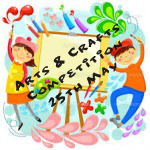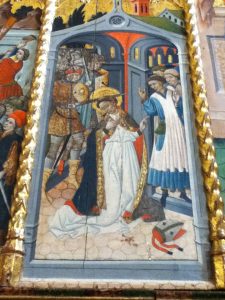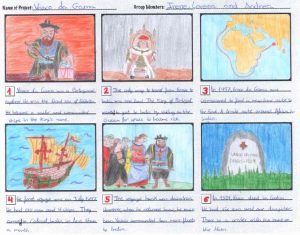C. – SECUNDARIA
now browsing by category
Talks for teachers from some conferences.
A wonderful thing about this global online world we are living in is that we can get access to some teacher training events which were recorded and uploaded to some websites. If you are interested in watching a couple of talks from two different conferences you can follow these links.
The first one is from the ELT British Conference held in Madrid on 1st October 2016 and is related to CLIL. Rebecca Place presents the idea of bringing the knowledge from outside the school into the lessons.
The second one is from the EdmodoCon held in San Mateo, California, USA, on 2th and 3rd August 2016. Stephanie Ward underlines the importance of sharing what happened in the class to the rest of the world.
https://www.youtube.com/watch?v=HxYd8CgFD8k
Science on Stage publication

The science of football.
What is the perfect curve of a ball’s trajectory, what must the ideal turf be like, and what’s the CO2 balance of the UEFA European Championship?
Football offers a great variety of questions and issues for your STEM classes: 20 teachers from 15 European countries developed twelve teaching units, presenting interesting experiments around football for biology, chemistry, computer sciences, maths and physics. From the measurement of the mass of the air inside the ball, to the influence of energy drinks on the performance of the players up to calculating the chance of scoring during a penalty shoot-out the brochure contains a broad spectrum of interdisciplinary challenges for secondary school students. The various teaching units encourage them to discover the natural scientific phenomena behind the popular game.
SCIENCE ON STAGE
Understanding geometry in a playful way – Learning by doing in mathematics
Who was not intimidated by solid geometry? Drawing three dimensional objects on paper with all their geometrical characteristics is often a challenge for students. However with simple materials from a DIY store (Do It Yourself store) and the instructions which you will find in this teaching unit, you will find that geometry becomes more intuitive. Jimmy Serment and Thierry Dias from Switzerland present their project about tactile mathematics for which they received the Science Teacher Award during the Science on Stage festival 2015 in London.
Find the material here for download.
Learning by doing in mathematics
workshop learning by doing in mathematics
Physical Education Teaching Resources. Unidad Carrera de Larga Duración.
Grupo de Bilingüismo. Departamento de Educación Física. San José de Calasanz, Barbastro.











 D5 Creation
D5 Creation